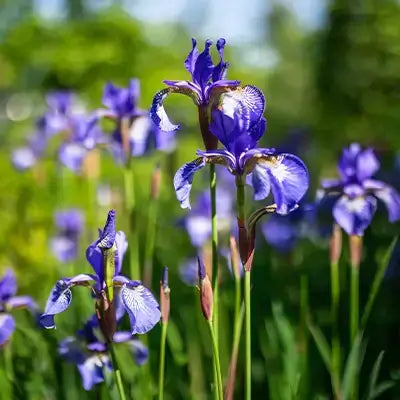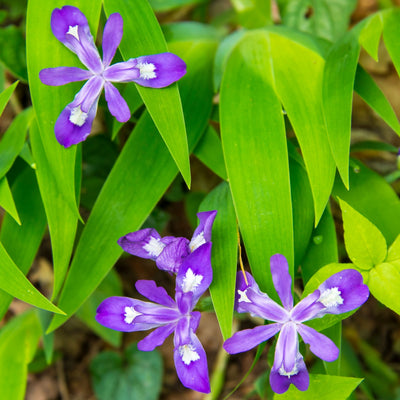The Siberian iris is a warm and welcoming flower that blooms in the fall. It is native to the dry foothills of Central Asia. The foliage resembles the irises in Italy and France, but the flowers aren't as fragrant. Its popularity has grown since the 1980s because of its adaptability for gardens ranging from sunlit to shady and moist to dry locations.
They are generally perennial herbaceous plants. The leaves are dark green and narrow-toothed, sometimes with a sharp point at the tip. It is famous for its beautiful foliage, but it produces tall, lanky flowers that bloom in spring and summer. With their various colors and patterns, It makes excellent additions to any garden or landscape.
Growing Siberian Iris From Seed
First, select a sunny site with rich, well-drained soil to sow them. You can also choose to sow your seed outdoors in the spring or autumn, though this may affect the flowering period of your plant.
Dig a small hole and plant each packet of seeds at least 2 inches (5 cm) below ground level. Ensure enough room is left between each packet of seeds so they can grow together into a single clump when planted together later. This spacing should be about 1 inch (2 cm).
Water the soil generously around each seed before planting it so that it takes root quickly after planting and before it grows tall enough for you to notice its presence above ground level.
Siberian Iris Light Requirements
It requires bright light, with ample direct sun for part of the day. It is best suited to a sunny window with only 6 hours of direct sunlight. The plant will tolerate shade but does not fare well when there is too much shade (it will stretch and become leggy). It also prefers cool temperatures, with a minimum of 20 degrees F. It will not appreciate drafts or air movement around the foliage if kept indoors during winter.
It is a plant that does not need a lot of water. It does not like to be overwatered and does not like to have its soil dry out. The soil should be moist, not soggy. The best way to water the plant is with a soaker hose, allowing you to water your plant without applying too much water. You can also use a drip irrigation system or sprinkler if you cannot access a soaker hose. In this case, make sure that you check on your plant every few hours to check whether it needs more or less water.
They can cause damage by feeding on top of the leaves, on new growth, or through stalks and blooms. Aphids also transmit viruses to nearby plants.
Scale insects can cause severe damage to them, primarily when they feed on foliage during hot weather.
Botrytis fungus is a fungal disease that affects flowers and foliage. It causes leaf drop from late autumn until spring. The specific pathogen requires excellent conditions for infection; it cannot survive for long periods at temperatures above 80 degrees Fahrenheit (27 degrees Celsius). Botrytis does not harm roots or stems, as do many other fungi.
How To Plant Siberian Iris in Your Garden
To plant Siberian Iris, you must dig a hole twice the size of the roots. Then place the roots in the hole and cover it with soil. If you want your plant to bloom at an early age, you can mark out your plant with a marker and fill in the spot with soil. After that, water your new plant well until its roots are covered.



